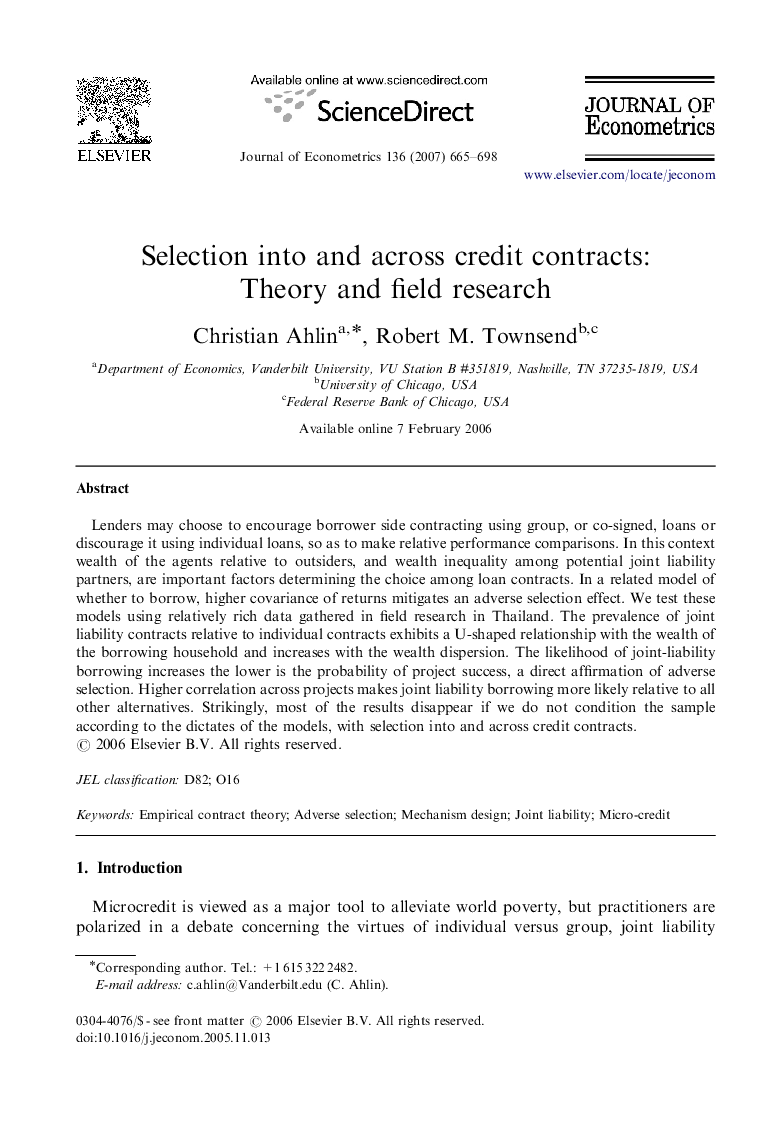| Article ID | Journal | Published Year | Pages | File Type |
|---|---|---|---|---|
| 5097412 | Journal of Econometrics | 2007 | 34 Pages |
Abstract
Lenders may choose to encourage borrower side contracting using group, or co-signed, loans or discourage it using individual loans, so as to make relative performance comparisons. In this context wealth of the agents relative to outsiders, and wealth inequality among potential joint liability partners, are important factors determining the choice among loan contracts. In a related model of whether to borrow, higher covariance of returns mitigates an adverse selection effect. We test these models using relatively rich data gathered in field research in Thailand. The prevalence of joint liability contracts relative to individual contracts exhibits a U-shaped relationship with the wealth of the borrowing household and increases with the wealth dispersion. The likelihood of joint-liability borrowing increases the lower is the probability of project success, a direct affirmation of adverse selection. Higher correlation across projects makes joint liability borrowing more likely relative to all other alternatives. Strikingly, most of the results disappear if we do not condition the sample according to the dictates of the models, with selection into and across credit contracts.
Related Topics
Physical Sciences and Engineering
Mathematics
Statistics and Probability
Authors
Christian Ahlin, Robert M. Townsend,
